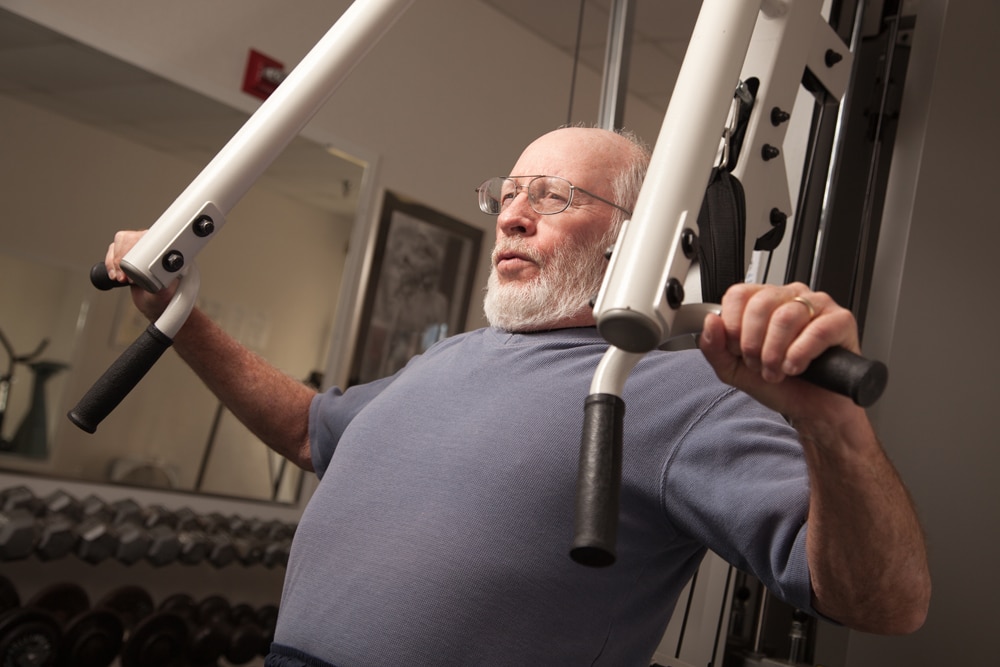In many previous posts (see here and here) and newsletters (see here and here) I have covered this sensitive topic, one that has been researched in pretty good depth over the past 2 decades. Dr Steven Blair, author of several articles with large data sets that show that being fit, even if being overweight or obese, mitigates the health effects of one’s excess weight. This has become known as the “obesity paradox”.
Others, too, have lectured and written (Dr Carl Levie, MD, “The Obesity Paradox: When Thinner Means Sicker and Heavier Means Healthier”) on this. Data seems to show that being too thin can be detrimental to cardiorespiratory health and that being slightly overweight (BMI 25-29.9) may be healthier than being overly-thin.
This is why Blair and Levie write, “It appears therefore that low cardiorespiratory fitness and inactivity are a greater health threat than obesity, suggesting that more emphasis should be placed on increasing leisure time physical activity and cardiorespiratory fitness as the main strategy for reducing mortality risk in the broad population of overweight and obese adults.”
Needless to say, there has been a flood rush of studies and articles questioning this thesis, and the down-stream effects of its message. The Pritikin people have responded vigorously. Now, Men’s Health Magazine comes back with a summary of a Swedish study, too, showing that being able to run – which many overweight folks won’t or can do – does not make you healthier than being lean but sedentary.
What’s a person to think, when bombarded by contradictory studies and articles????
Which is why you read Dr. Irv’s blog posts, right:)
Let’s start with a couple precepts. There is truth to this statement – “Although regular physical activity contributes to the reduction of adiposity, many beneficial health effects from physical activity are independent from its effect on adiposity.”
Taking that as our starting point, we can go backwards and acknowledge that weight loss – once you are overweight – is best accomplished by eating fewer calories – of ALL kinds. Weight maintenance is best accomplished by not only restricting calories but also by incorporating aerobic exercise into your lifestyle. It takes both actions to effect authentic, long-lasting weight control.
Once we get to the point where you have established a healthy lifestyle, we have to recognize that some of us are built to be small and others large, both in height and in weight. Our genetics factor in to the tune of 50-70% of our weight-height ratio. Our environment than plays a gigantic role in meeting our genetic potentials.
So being fit is recognized by all as being better than being unfit. And being fit at whatever weight – assuming one’s fitness was derived by appropriate levels of exercise and nutritional inputs – is better than being unfit at whatever weight.
Which brings us back to our starting point – that there are many beneficial effects from fitness that are independent of fitness’s effects on adiposity (or fatness.)
But now we have to confront fatness head on. Can being fit and fat be healthier than being unfit/sedentary and thin? This flies in the face of most of what we see but then we have to go beyond the clothing and into the naked body.
You see, there are many lean-appearing people who’s body fat is high. With the right clothes – pinstripes vs lateral stripes, black vs other colors, tight vs loose fitting – people can hide their bodies, and do. This is not to say we should expose our bodies even if they are physically attractive. It is to say that many whose bodies are not fit have ways and means to give others the illusion that they are lean and fit.
Even doctors usually don’t go beyond that first layer of clothes. Only fitness professionals, especially those who do body fat assessments, delve below the surface. And we often find that folks are fatter than they expect.
Once we get naked, once we bare our skin, we can ‘pinch an inch’ so to speak. There we find out who’s been naughty and who’s been nice. Yet, I refuse to label excess superficial tissue – skin and fat – as naughty or nice, for the following reasons.
One, there are gender specific realities that put more fat on women than men post-puberty.
Two, there are ethnic and cultural issues that play into concepts of beauty and healthfulness that may incline folks toward a little more meat on the bones than what medicine and health experts might prefer.
Three, there are lifestyle realities that impact on people’s abilities to engage in the kinds of behaviors that could prevent excess weight accrual. Our neighborhoods and cities may not be designed to accommodate an active lifestyle. Our incomes may impose restrictions on options such as gym memberships. Our jobs – including home-related jobs like raising kids and caring for the house itself – surely limits our abilities to take time to both shop and prepare healthy foods let alone get in 10,000 steps. Etc etc etc.
You get my point, I hope. There are many reasons that many – no, MOST – people are not lean and fit, and I have not even gone back to our anthropological roots whereby (this is a current theme in the research) we were designed to stash calories during feast times in preparation for fast times, with survivors of lean times being fattier than those who were thinner. (It was with intent that I juxtaposed some of the words in that sentence.)
So going back to the concerns of the title of this post and the other references, let me state what should be obvious if you’ve read other blogs and newsletters.
There is life to live and we are given the same 24 hours in a day to live it. We do have free choice as to how we use that time, and our available energies, and some of that energy is used wisely and some is not. For those who incorporate enough physical activity to be healthy enough to live the lives they choose for themselves, mazel tov.
For those who choose to live healthier lives than their genetics, culture, environment, and natural state allow, who are willing to commit the time and energy and money to eat and exercise better, righter, and more aligned with whatever concept of health is prevalent at the time, great.
But for all those who are for whatever reasons unable or unwilling to do so, it is necessary to understand that each is making that choice for him and herself. We can choose to not be sympathetic or empathetic to it but we can also choose to not be overly-judgmental as well. By recognizing that, as Jackson Browne sang, we all “struggle for the legal tender” (though he meant money), life is a bitch and we have to take it or leave it.
Health is a choice, an option, and it is one over which we often have little control. Too many fit and lean people have died prematurely (we say) even in the midst of their exercise session for anyone to say this is the ONLY way where ‘only’ means ‘good’ or ‘right’.
While I prefer to make my livelihood promoting health and fitness, I do so with an overarching philosophy that positions my role in the lives of my clients and for you, my readers. That is, while you are in the gym, under my supervision (or not), you are doing good for yourself. You are helping your bones, muscles, heart, kidneys, brain – hell, ain’t that enough? If you don’t get the lean physique you’d like and that society and medicine say you should have, so be it.
The alternative – to be sedentary and unfit – is a helluva lot worse.
Happy holidays, but try to keep some of your health habits alive, please.
















